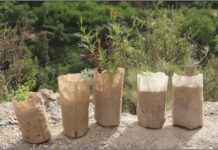By Nita Karume :
It often goes without saying that the prices of agricultural produce in dry seasons are often much higher than produce in the rainy seasons. This is because rain-fed agriculture allows all farmers to cultivate and harvest almost simultaneously.
However, irrigation facilities enable farmers to beat the law of demand and supply in this case. As such, they are able to produce crops at odd periods especially the dry season when rain-fed agricultural products are not available.
Unfortunately, the short supply of irrigated crops always forces the prices up. It would thus be a wise move for any farmer to produce for such periods. To accomplish this, said farmers should look into digging wells, boreholes, using dams and collection of rain water into tanks for farm irrigation in the dry season.
Water collection
In both small and large scale, dry season farming requires adequate planning. This is inclusive of rain water collection during the dry periods of September to November. For instance, small scale farmers of one or two acres of land can save cost of sinking a borehole or pumping water for farm irrigation by collecting water into underground reservoirs or plastic tanks.
Several plastic tanks of 6,000 to 10,000 litres could be purchased, put on a slightly elevated floor at the highest points on the piece of land to be used for irrigated farming. From the elevated floor, water can flow from the tanks to the crops through drip irrigation holes.
Alternatively, civil engineers and welders can help with the construction of underground or overhead tanks on the farm. Rain water will then collected into these through improvised rain collection devices.
Benefits of rain water harvesting
Rain water harvesting eliminates the cost of pumping water for farm irrigation with power generators. This also makes the operations more sustainable since cases of inadequate water will be solved by the daily pumping of well water for purposes of supply till harvest times.
On the other hand, there are also solar powered pumping machines that could reduce the cost of pumping water on a small farm, with little initial capital. Ideally, profitability of the farm operations increases with cost-cutting water collection and solar pumping machines.
This, in turn, serves to increase the disposable income of farmers and their households, meeting their basic needs and improving their living standards.
Dry season crops
Early maturing crops that could be planted in the dry season include cucumber, sweet melon, watermelon, maize and okra. These crops appear ordinary, but when produced out of the regular season, they are highly profitable.
Drip irrigation maximizes water utilization efficiency. This in turn eliminates waste, unlike sprinkler or flooding irrigation systems. The system uses tiny holes on the farmland, with drips of water dropping from the calibrated outlets from the holes to the base of the crops. This way, water is adequately utilized and good results obtained.
According to research, an hour of irrigation is enough for the plants in a day. This can be done 30 minutes in the morning and 30 minutes in the evening. Moreover, keeping in mind the volume of water needed, early maturing varieties of the said crops are necessary.









